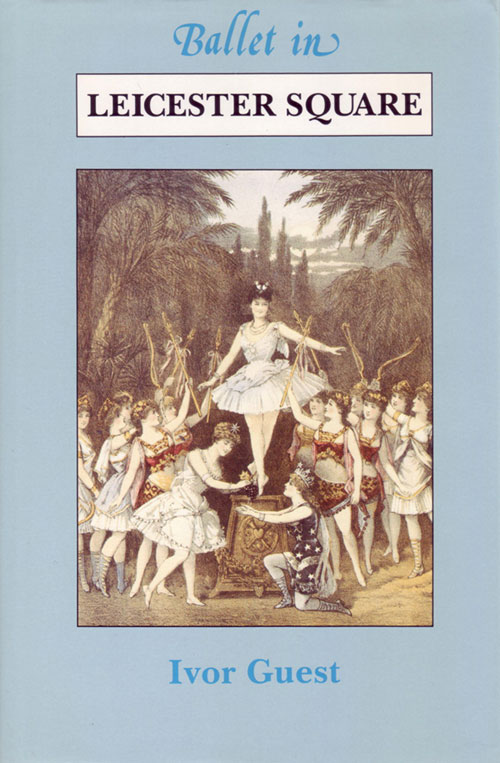Discover when ballet ruled the stages of London’s Alhambra and the Empire Theatres!
More than half a century separates the golden age of Romantic ballet from the creative tour de force of Diaghilev’s Ballets Russes. Although many histories of ballet dismiss the intervening period as inconsequential, ballet remained very much alive—and thrived—as a essential part of popular theatre. Between 1860 and the outbreak of the First World War, London’s great music halls provided ballet with fertile ground in which to flourish, and made ballet accessible to a wider public than ever before. In particular, ballet became centred in Leicester Square, where London’s two most famous music halls, the Alhambra and the Empire, attracted thousands with their novelties and lively ballet spectaculars.
These venues were to play a leading role in the fortunes of British ballet. Both venues established a permanent corps de ballet and engaged choreographers of high repute to create shows that often ran for months at a time. At the Alhambra, a galaxy of celebrated ballerinas took the limelight, including Emma Palladino, Pierina Legnani and Rita Sangalli. Across the square, the Empire became the shrine at which Edwardians worshiped Adeline Genée and, after her retirement, Phyllis Bedells, the first English prima ballerina, and the Russian Lydia Kyasht.
In this eminently readable account, Ivor Guest traces the colourful history of ballet at the Alhambra and the Empire, and reveals the astonishing array of ballets they presented. He shows how the music halls created a truly diverse audience of ballet enthusiasts—and, most importantly, the crucial role that the music halls played as a training ground for English dancers who later appeared with Diaghilev’s Ballets Russes.
Dance Books, 1992. Hardcover, 192 pages.
Contents
The Alhambra Ballet
1. Ballets comes to Leicester Square (1860-72)
2. Improving the image (1872-84)
3. The return of the narrative ballet (1884-94)
4. Changing fortunes (1894-1901)
5. The Edwardian years (1902-10)
6. The last years of the Alhambra ballet (1911-12)
The Empire Ballet
7. The Empire Theatre’s beginnings (1884-86)
8. Katti Lanner
9. The Empire becomes the home of ballet (1887-91)
10. The emergence of the up-to-date ballet (1891-97)
11. The Genée years (1897-1908)
12. The final phase (1908-15)
Appendices
Bibliography
Index



